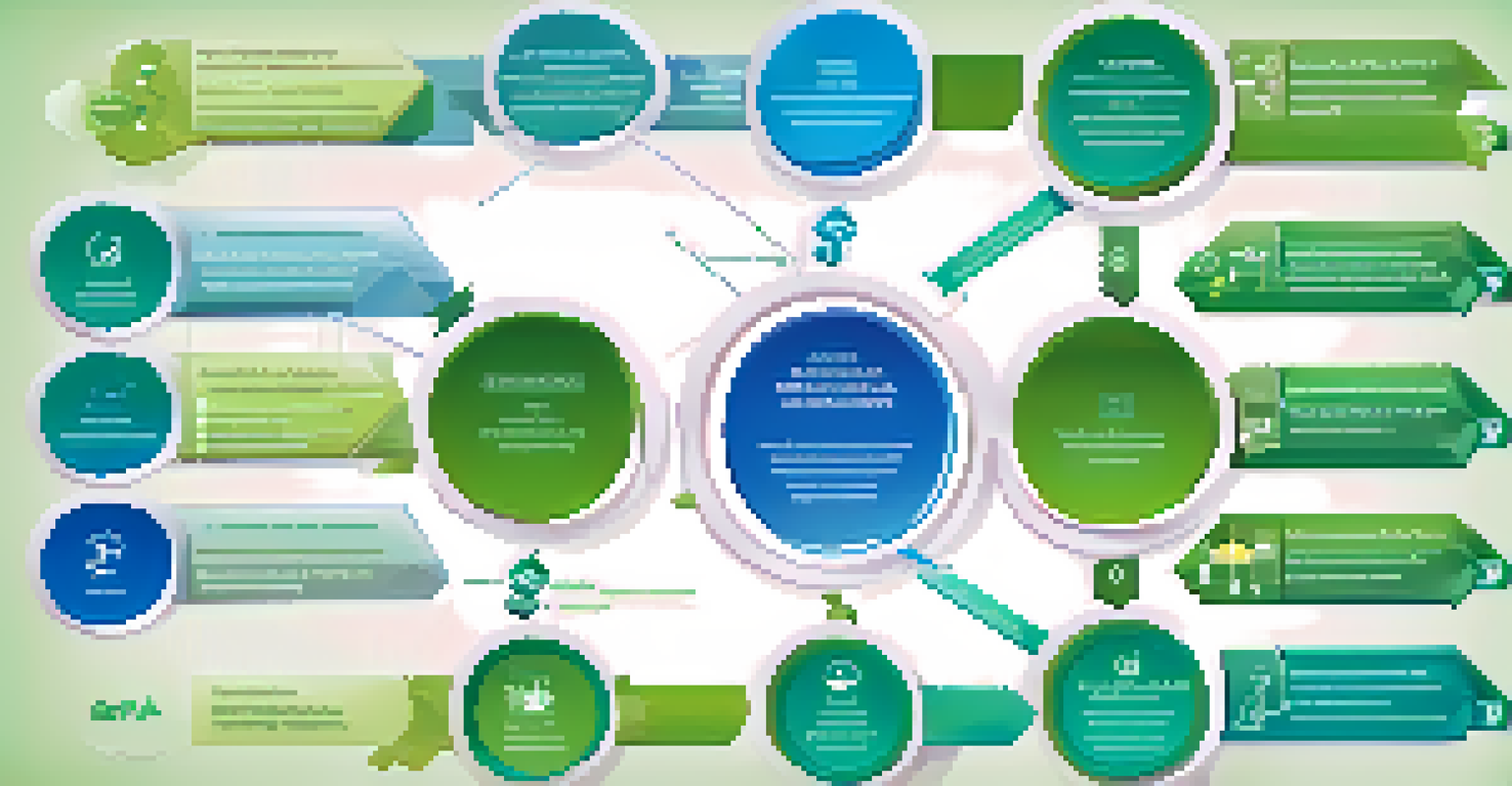Integrating Business Process Automation with Existing Systems

Understanding Business Process Automation Basics
Business Process Automation (BPA) refers to using technology to execute recurring tasks or processes in a business. This can lead to increased efficiency, reduced costs, and improved quality of services. For instance, automating data entry can free up employees for more strategic tasks, enhancing overall productivity.
Automation does not eliminate jobs, it transforms them.
BPA can be as simple as automating email responses or as complex as integrating entire systems across departments. The key is to identify processes that are repetitive and time-consuming. By focusing on these areas, businesses can maximize their return on investment in automation technologies.
Moreover, understanding the basics of BPA allows organizations to approach integration with a clearer vision. It sets the stage for identifying what existing systems need to be connected, ensuring a smoother transition and implementation.
Assessing Existing Systems for Integration Potential
Before integrating BPA, it’s crucial to assess the existing systems within your organization. This involves understanding how these systems function, their capabilities, and their limitations. A thorough analysis will help determine which processes can be automated and which systems can effectively support this integration.

Consider conducting a gap analysis to identify discrepancies between current operations and desired outcomes. This will not only highlight areas for improvement but also clarify which systems need upgrades or replacements. For example, if an outdated CRM system lacks automation features, it might be time to invest in a more modern solution.
BPA Boosts Efficiency and Quality
Business Process Automation enhances operational efficiency, reduces costs, and improves service quality by automating repetitive tasks.
By thoroughly assessing your systems, you set yourself up for a successful integration process. This step ensures that you’re not just automating for the sake of it, but rather enhancing your overall business efficiency and effectiveness.
Choosing the Right Automation Tools for Integration
Selecting the right tools is essential for successful integration of BPA into existing systems. You’ll want to look for software that is compatible with your current infrastructure and can easily connect with other platforms. Popular choices include Zapier, Microsoft Power Automate, and various Enterprise Resource Planning (ERP) systems.
The goal of automation is to make work easier, not to replace human effort.
When evaluating tools, consider scalability and flexibility. As your business grows, your automation needs may change, so it’s important to choose solutions that can adapt. A tool that seamlessly integrates with your existing systems will save time and reduce future headaches.
Additionally, don't underestimate the importance of user experience. Tools should be intuitive and easy to use, so your team can adopt them without extensive training. This will encourage faster implementation and maximized benefits from your automation efforts.
Creating a Step-by-Step Integration Plan
A well-structured integration plan is the backbone of successful BPA implementation. Start by defining clear objectives for what you want to achieve with automation. This could range from reducing manual errors to speeding up customer service responses.
Next, outline each step of the integration process, including timelines and responsible parties. This not only keeps the project organized but also ensures accountability. For instance, if you're automating invoice processing, pinpoint who will oversee the integration and when it should be completed.
Assess Systems for Automation Fit
A thorough assessment of existing systems is crucial to identify areas for automation and ensure effective integration.
Regularly review and adjust the plan as necessary. Flexibility is key, as unforeseen challenges may arise during integration. By having a solid yet adaptable plan, you increase the chances of a smooth transition and successful automation.
Testing Integration for Seamless Operation
Once you've implemented your BPA solutions, thorough testing is crucial. This involves running simulations to ensure that automated processes function as intended. For example, if you've automated data transfer between two systems, check for accuracy and speed in the data flow.
Testing also allows you to identify potential issues before going live. Addressing these problems early can prevent significant disruptions in operations. It's akin to a dress rehearsal for a play; you want everything to run smoothly on opening night.
Involve key stakeholders in the testing phase to gather feedback and ensure all perspectives are considered. This collaborative approach not only enhances the quality of your automation but also promotes buy-in from your team.
Training Employees on New Automated Processes
Training your employees on the new automated processes is vital to achieving success with BPA. Even the best automation tools won’t yield results if the team doesn’t know how to use them effectively. Consider offering hands-on workshops and resources to ease the transition.
Encourage a culture of continuous learning, where employees feel comfortable asking questions and sharing their experiences. When team members understand how automation can benefit their roles, they are more likely to embrace the change. For instance, demonstrating how automation can reduce their workload will foster a positive attitude toward the new processes.
Train Employees for Successful Adoption
Providing training and ongoing support for employees is essential to maximize the benefits of new automated processes.
Additionally, providing ongoing support post-training can help alleviate any concerns. Regular check-ins allow employees to voice challenges and seek assistance, ensuring everyone feels confident in using the new systems.
Measuring Success and Optimizing Automated Processes
After implementation, measuring the success of your BPA integration is essential. Utilize key performance indicators (KPIs) such as time saved, error reduction, and cost efficiency to gauge effectiveness. This data will provide insights into how well the automation is performing and where improvements can be made.
Regularly review these metrics and be open to making adjustments. Automation is not a set-it-and-forget-it solution; it requires ongoing optimization to stay relevant. For example, if you notice that a particular automated task still takes longer than expected, investigate potential bottlenecks.

Moreover, gathering feedback from employees who interact with the automated processes can provide valuable insights. Their firsthand experience can reveal nuances that data alone might not capture, allowing for a more holistic approach to optimization.